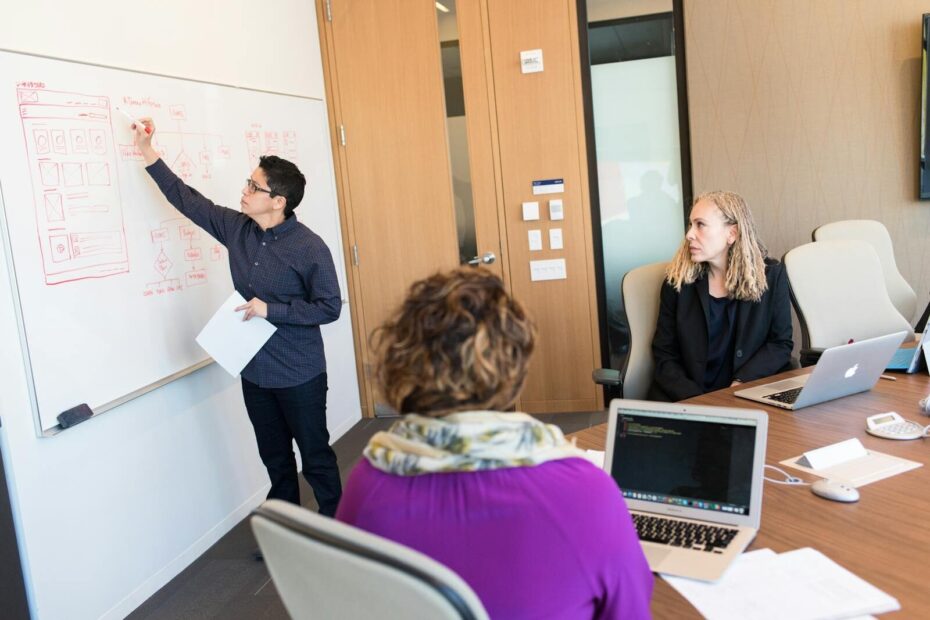Becoming a strong leader requires more than skills—it needs a growth mindset. This is a way of thinking that helps you learn, stay positive, and improve every day. With a growth mindset, you see challenges as chances to grow and see setbacks as learning steps.
This guide will show you how to develop a growth mindset as a leader in simple, easy steps. Let’s get started.
What Is a Growth Mindset?
A growth mindset is a belief that you can improve and get better through hard work and learning. Leaders with a growth mindset see challenges as new chances, not as threats. They think they can get better at anything by learning and practicing.
Why Leaders Need a Growth Mindset
As a leader, your attitude affects your team. If you believe in growth and learning, your team is more likely to follow. A growth mindset helps you adapt to changes, find solutions, and stay calm under pressure.
How to Develop a Growth Mindset
Building a growth mindset as a leader is a journey. Here are some key steps to help you develop it.
1. Start by Setting Clear Goals
Having goals gives you a clear path forward. Start by setting goals that challenge you. These goals should make you stretch and grow. For example, if you want to be better at problem-solving, set a goal to tackle one complex issue each week.
- Write Down Your Goals: Putting your goals in writing makes them feel real and keeps you accountable.
- Make Goals Small and Doable: Break big goals into smaller steps so that they don’t feel overwhelming.
2. See Challenges as Opportunities
Growth-minded leaders don’t avoid challenges. They see them as opportunities to learn something new. When faced with a difficult task, remember that it’s a chance to grow.
- Practice Patience: Learning takes time. Be patient with yourself and don’t rush the process.
- Welcome Feedback: Sometimes others see areas you can improve that you may miss. Feedback helps you grow faster.
3. Embrace Mistakes
Mistakes are part of the growth journey. Instead of feeling bad about mistakes, see them as learning steps. Each mistake teaches you something important.
- Reflect on Mistakes: Think about what went wrong and how you can fix it next time.
- Learn from Others: Study how other leaders handle their mistakes to gain new ideas.
4. Focus on Continuous Learning
A leader with a growth mindset never stops learning. Look into new ideas, read books, and talk to others to expand your knowledge.
- Read Regularly: Reading keeps your mind active and helps you learn about new topics.
- Attend Workshops: Workshops are a great way to see new ideas and skills.
5. Encourage a Growth Mindset in Your Team
Your team looks to you for direction. When they see you practicing a growth mindset, they’re more likely to do the same. Encourage them to take risks, learn from mistakes, and stay positive.
- Reward Effort, Not Just Results: Recognize hard work, even if things didn’t go perfectly. This shows that trying and learning are valuable.
- Lead by Example: Show your team that you are also learning and growing.
6. Focus on ‘Yet’
When facing a tough skill or task, remind yourself that you haven’t mastered it yet. This simple word adds hope and reminds you that you’re on a learning path.
- Say, “I can’t do this yet.” This mindset shows that with effort, you’ll improve.
- Teach Your Team the Power of ‘Yet’: Encourage them to say “I don’t understand yet” instead of “I don’t understand.”
7. Practice Self-Reflection
Take time to think about your progress. Self-reflection helps you see where you’re growing and where you need more work.
- Set Time for Reflection: At the end of each week, review your progress and areas to improve.
- Ask Yourself Questions: “What did I learn this week?” or “What can I do better next time?” These questions keep you focused on growth.
Building Resilience for a Growth Mindset
Resilience is your ability to bounce back after challenges. Strong leaders develop resilience to help them stay strong through ups and downs.
1. Accept that Growth Takes Time
Growth doesn’t happen overnight. Accepting this helps you stay calm and patient, even when things are hard.
- Celebrate Small Wins: Each small achievement brings you closer to your big goals. Celebrating small wins can keep you motivated.
- Practice Positive Thinking: Staying positive helps you see setbacks as temporary.
2. Manage Stress Wisely
Leading a team can be stressful. Managing stress helps you stay focused and make better choices.
- Take Breaks: Short breaks can refresh your mind and help you return to work with new energy.
- Practice Mindfulness: Mindfulness helps you stay calm, focused, and aware of your thoughts.
Using Growth Mindset in Problem Solving
Good leaders use their growth mindset to solve problems. Here are some ways to use it:
1. Break Down Problems
Instead of feeling overwhelmed, break the problem into smaller parts. This makes it easier to tackle each part.
- List Each Step: Write down steps to solve each part of the problem.
- Stay Focused: Focus on one part at a time, and don’t rush.
2. Brainstorm Solutions
Gather ideas from others and try different solutions. The more ideas you have, the better the chance of finding a solution.
- Ask Your Team for Input: Different viewpoints can lead to new solutions.
- Think Outside the Box: Sometimes, creative ideas are the best way to solve a problem.
3. Learn from Each Solution
Even if a solution doesn’t work, it’s still a learning step. Each attempt teaches you something useful.
- Keep Track of What Works: Write down what worked well and what didn’t.
- Adjust Your Approach: Each time, make small changes to get closer to a good solution.
Building Positive Relationships with a Growth Mindset
Leaders with a growth mindset build strong relationships with their team. They value each team member and believe everyone can grow.
1. Show Empathy
Empathy is the ability to understand others’ feelings. It helps leaders connect with their team and create a positive atmosphere.
- Listen Actively: Give your full attention to each team member when they talk.
- Show You Care: Small acts, like checking in on your team, can make a big difference.
2. Encourage Team Growth
Motivate your team to work on their own growth. When the team grows, everyone benefits.
- Offer Learning Opportunities: Help them attend workshops or see online courses.
- Set Team Goals: Working toward goals together builds unity.
3. Celebrate Success Together
Celebrating success makes everyone feel valued and motivates them to keep growing.
- Recognize Small Achievements: Even small successes deserve recognition.
- Celebrate as a Team: Team celebrations build a sense of belonging.
Developing a Positive Mindset for Success
A growth mindset thrives with positivity. Here are ways to develop a positive attitude in your leadership:
1. Focus on Solutions, Not Problems
Instead of getting stuck on problems, look for solutions. This keeps you moving forward.
- Ask Yourself, “What can I do?” This question helps you focus on what’s possible.
- Stay Hopeful: Believe that you can solve the problem with effort.
2. Stay Curious
Curiosity leads to growth. Always be open to learning more and seeing new things.
- Ask Questions: Curiosity keeps your mind active and helps you learn.
- Try New Experiences: Each new experience is a chance to grow.
Final Thoughts
Building a growth mindset takes time, patience, and effort. Remember, each step brings you closer to becoming a stronger leader. Set goals, embrace challenges, learn from mistakes, and stay positive.
When you focus on growing every day, you inspire your team and create a positive work environment. Lead by example, and let your growth mindset guide you to success.
By following these steps, you can develop a growth mindset that will not only help you become a better leader but also encourage your team to see growth as part of their own journey.

